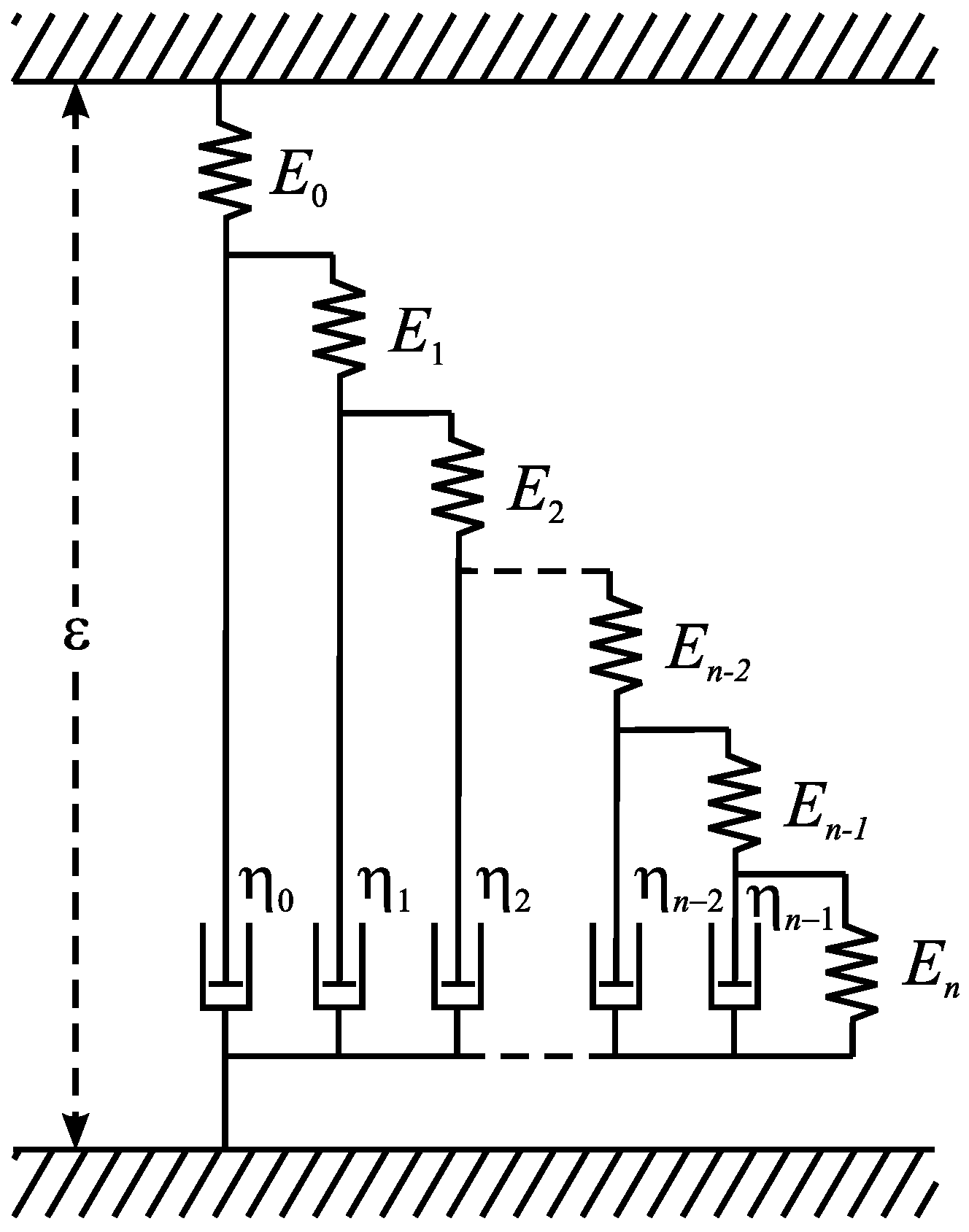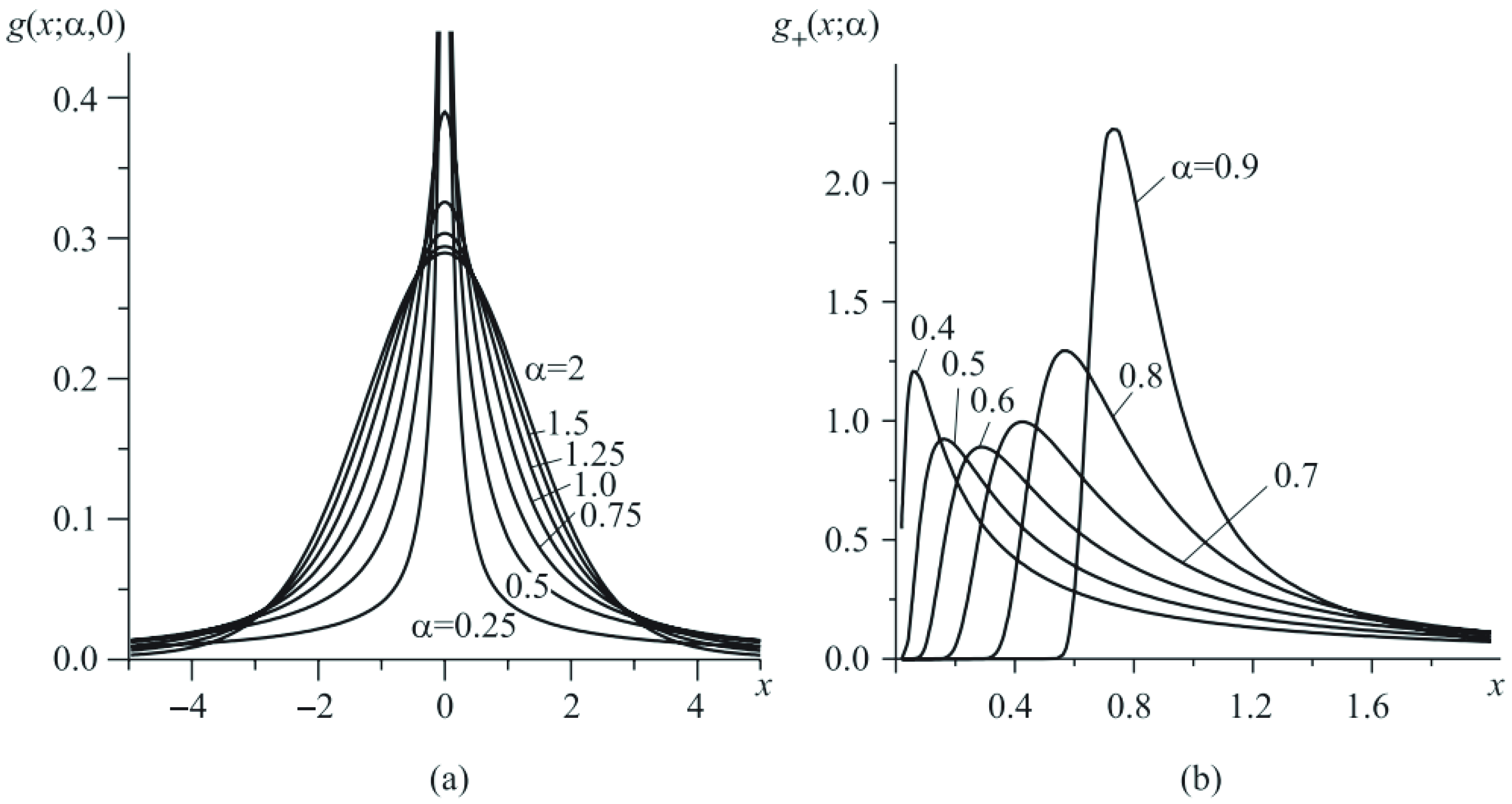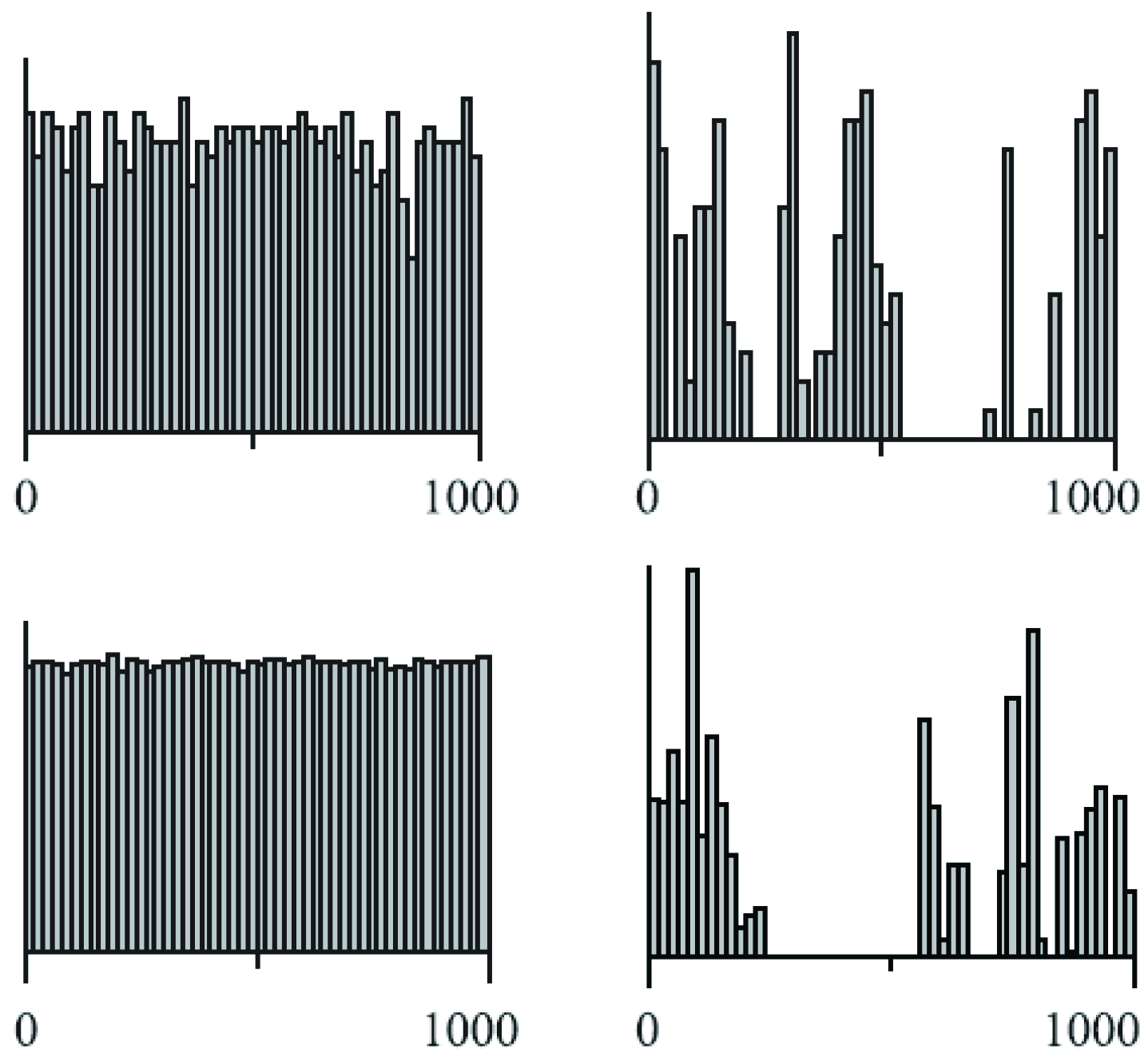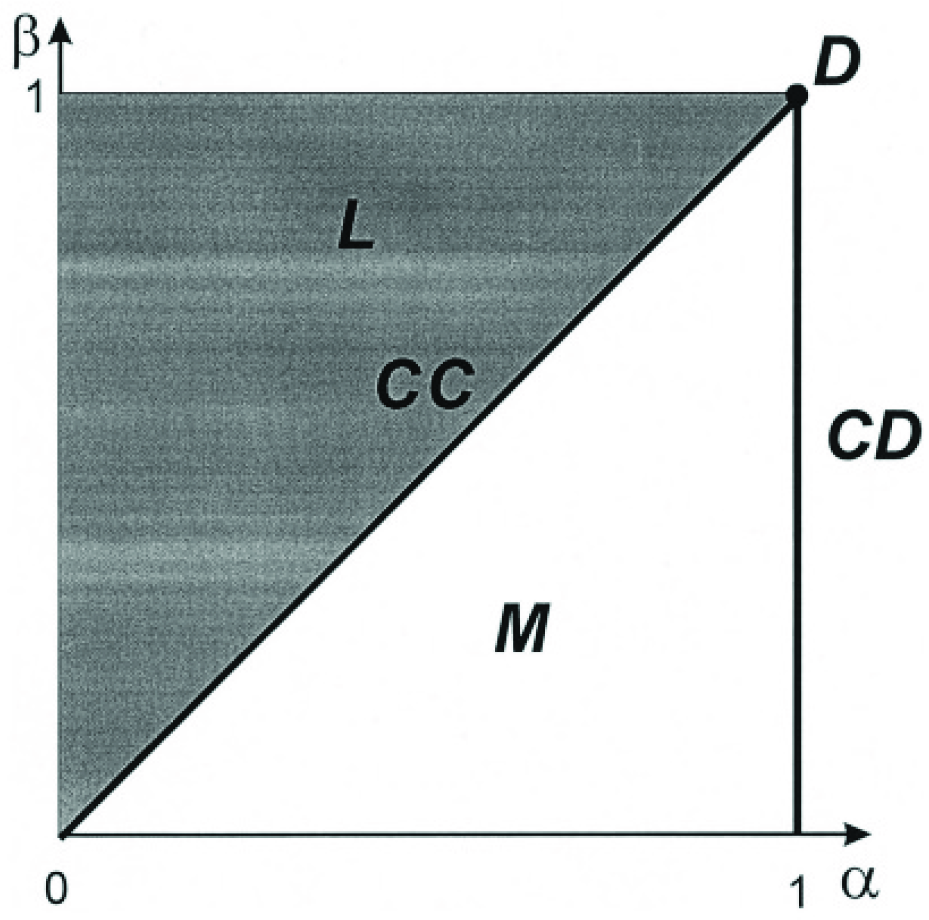Non-Local Seismo-Dynamics: A Fractional Approach
Abstract
:1. Introduction
2. Complexity, Self-Similarity and Levy-Statistics
2.1. Complexity
2.2. Self-Similarity
3. Open Subsystem Dynamics
3.1. The Statistical Approach to the Problem
3.2. Zwanzig–Mori Projection Operators
3.3. Splitting the Liouville Equation
3.4. Replica Lindblad Equation
3.5. Fractional Version of RLE
3.6. Fractional Equations
3.7. Intermittency and Clusterizatioin
4. Multipower Models of Fractional Responce
4.1. One-Power Approximations of Non-Debye Relaxation
4.2. Three-Power Approximation of HN-Process in Region L
5. Conclusions
Author Contributions
Funding
Data Availability Statement
Conflicts of Interest
References
- Kagan, Y.Y.; Knopoff, L. Statistical short-term earthquake prediction. Science 1987, 236, 1563–1567. [Google Scholar] [CrossRef] [PubMed]
- Helmstetter, A.; Sornette, D. Diffusion of epicenters of earthquake aftershocks, Omori’s law and generalized continuous-time random walk models. Phys. Rev. E 2002, 66, 061104. [Google Scholar] [CrossRef] [PubMed]
- Dragoni, M.; Bonafede, M.; Boschi, E. Stress Relaxation in the Earth and Seismic Activity. Riv. Nuovo Cim. 1982, 5, 1–34. [Google Scholar] [CrossRef]
- Zhang, X.; Shcherbakov, R. Power-law rheology controls aftershock triggering and decay. Sci. Rep. 2016, 6, 36668. [Google Scholar] [CrossRef]
- West, B.J.; Bologna, M.; Grigolini, P. Physics of Fractal Operators; Springer: New York, NY, USA, 2003. [Google Scholar]
- Heymans, N. Constitutive equations for polymer viscoelasticity derived from hierarchical models in cases of failure of time–temperature superposition. Signal Process. 2003, 83, 2345–2357. [Google Scholar] [CrossRef]
- Schiessel, H.; Blumen, A. Mesoscopic Pictures of the Sol-Gel Transition: Ladder Models and Fractal Fireworks. Macromolecules 1995, 28, 4013–4019. [Google Scholar] [CrossRef]
- Burridge, R.; Knopoff, L. Model and Theoretical Seismicity. Bull. Seismol. Soc. Am. 1967, 57, 341–371. [Google Scholar] [CrossRef]
- Sheremetyeva, O.; Shevtsov, B. Fractional model of the deformation process. Fractal Fract. 2022, 6, 372. [Google Scholar] [CrossRef]
- West, B. Fractional calculus view of complexity. Rev. Mod. Phys. 2014, 86, 1169–1182. [Google Scholar] [CrossRef]
- Uchaikin, V.V. Self-Similarity, Stochasticity and Fractionality. In Long-Range Interaction, Stochasticity and Fractional Dynamics; Luo, A.C.J., Afraimovich, V., Eds.; Higher Educational Press, Springer: Beijing, China, 2010; pp. 27–82. [Google Scholar]
- Uchaikin, V.V. Fractional Derivatives for Physicists and Engineers; Background and Theory; Higher Education Press, Springer: Beijing, China, 2013; Volume 1. [Google Scholar]
- Uchaikin, V.V.; Zolotarev, V.M. Chance and Stability; VSP: Utrecht, The Netherlands, 1999. [Google Scholar]
- Di-Ventra, M. Electrical Transport in Nanoscale Systems; Cambridge University Press: Cambridge, UK, 2008. [Google Scholar]
- Uchaikin, V.V. Fractional differential models in hydromechanics. Sci. Sheets Belgorod Univ. Ser. Math. Phys. 2014, 25, 58–67. (In Russian) [Google Scholar]
- Uchaikin, V.V.; Cahoy, D.O.; Sibatov, R.T. Fractional processes: From Poisson’s to branching ones. Intern. J. Bifurcations Chaos 2008, 18, 2717–2725. [Google Scholar] [CrossRef] [Green Version]
- Cahoy, D.O.; Uchaikin, V.V.; Woyczynski, W.A. Parameter estimation for fractional Poisson processes. J. Statist. Plann. Inference 2010, 140, 3106–3120. [Google Scholar] [CrossRef]
- Uchaikin, V.V.; Uchaikin, D.V. Fractional-differential earthquake model. Rev. Appl. Ind. Math. 2009, 16, 392–394. (In Russian) [Google Scholar]
- Ramakrishnan, T.V.; Lakshmi, M.R. Non-Debye Relaxation in Condensed Matter; World Scientific: Singapore, 1987. [Google Scholar]
- Jonscher, A.K. Dielectric Relaxation in Solids; Chelsea Dielectrics Press: London, UK, 1983. [Google Scholar]
- Jonscher, A.K. Universal Relaxation Law; Chelsea Dielectrics Press: London, UK, 1996. [Google Scholar]
- Cole, K.S.; Cole, R.N. Dispersion and absorption in dielectric. Alternating current characteristics. J. Chem. Phys. 1941, 9, 341–351. [Google Scholar] [CrossRef]
- Havriliak, S.; Negami, S. A complex plane representation ofdielectric and mechanical relaxation processes in somepolymers. Polymer 1967, 8, 161–210. [Google Scholar] [CrossRef]
- Nigmatullin, R.; Ryabov, Y. Cole–Davidson dielectric relaxation as a self-similar relaxation process. Phys. Solid State 2008, 39, 87–90. [Google Scholar] [CrossRef]
- Podlubny, I. Fractional Differential Equations; Academic Press: San Diego, CA, USA, 1999. [Google Scholar]
- Pickands, J. Statistics inference using extreme order statistics. Ann. Stat. 1975, 3, 119–131. [Google Scholar]
- Mainardi, F.; Mura, F.; Gorenflo, R. The two forms of fractional relaxions of distributed orders. J. Vib. Control 2007, 13, 1249–1268. [Google Scholar] [CrossRef]
- Mainardi, F.; Antonio, M.; Pagnini, G.; Gorenflo, R. Fractional relaxation and time-fractional diffusion of distributed order. IFAC Proc. Vol. 2006, 39, 1–21. [Google Scholar] [CrossRef]
- Stojanovic, M. Fractional relaxation equations of distributed order. Nonlinear Anal. Real World Appl. 2012, 13, 939–946. [Google Scholar] [CrossRef]
- Frisch, U. On multifractal and fractional derivatives. J. Stat. Phys. 2002, 108, 1181–1202. [Google Scholar] [CrossRef]
- Davis, A.; Marshak, A. Multifractal characterizftions of non-stationary and intermittency …in geophysical fields. J. Geophys. Res. 1994, 99, 8055–8072. [Google Scholar] [CrossRef]
- Mandelbrot, B.B. Multifractal measures, Especially for the geophysicist. Pure Appl. Geophys. 1989, 131, 5–42. [Google Scholar] [CrossRef]
- Ding, W.; Patnaik, S.; Sidhardh, S.; Semperlotti, F. Applications of Distributed-Order Fractional Operators: A Review. Entropy 2021, 10, 110. [Google Scholar] [CrossRef] [PubMed]
- Uchaikin, V.V. Automodelity as a characteristic property of nonlocal anomalous diffusion. Vestn. Novgorod. Gos. Univ. 2021, 123, 43–46. (In Russian) [Google Scholar]
- Uchaikin, V.V. Nonlocal Turbulent Diffusion Models. J. Math. Sci. 2021, 253, 573–582. [Google Scholar] [CrossRef]








Publisher’s Note: MDPI stays neutral with regard to jurisdictional claims in published maps and institutional affiliations. |
© 2022 by the authors. Licensee MDPI, Basel, Switzerland. This article is an open access article distributed under the terms and conditions of the Creative Commons Attribution (CC BY) license (https://creativecommons.org/licenses/by/4.0/).
Share and Cite
Uchaikin, V.; Kozhemiakina, E. Non-Local Seismo-Dynamics: A Fractional Approach. Fractal Fract. 2022, 6, 513. https://doi.org/10.3390/fractalfract6090513
Uchaikin V, Kozhemiakina E. Non-Local Seismo-Dynamics: A Fractional Approach. Fractal and Fractional. 2022; 6(9):513. https://doi.org/10.3390/fractalfract6090513
Chicago/Turabian StyleUchaikin, Vladimir, and Elena Kozhemiakina. 2022. "Non-Local Seismo-Dynamics: A Fractional Approach" Fractal and Fractional 6, no. 9: 513. https://doi.org/10.3390/fractalfract6090513
APA StyleUchaikin, V., & Kozhemiakina, E. (2022). Non-Local Seismo-Dynamics: A Fractional Approach. Fractal and Fractional, 6(9), 513. https://doi.org/10.3390/fractalfract6090513






